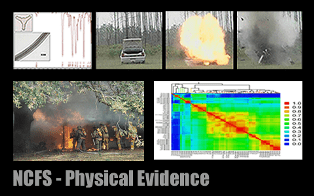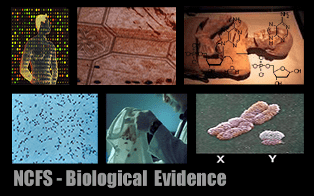NCFS: Pioneers in the Forensic Science Community
Few realize that UCF is home to one of the few Academic Forensic Science Centers in the United States. The National Center for Forensic Science (NCFS) produces future  thought-leaders and practitioners in forensic science as well as first class research that has benefitted the forensic science community since 1997. Playing an essential role in the world of forensic science, the center has had a hand in some of the most influential research that helps to solve crimes all over the country and support the criminal justice community.
thought-leaders and practitioners in forensic science as well as first class research that has benefitted the forensic science community since 1997. Playing an essential role in the world of forensic science, the center has had a hand in some of the most influential research that helps to solve crimes all over the country and support the criminal justice community.
Part of NCFS’s vision is dedicated to, “pushing back the frontiers of forensic science by integrating high level research, technology and scientific working groups.” There are two main focus areas in NCFS where that vision is coming to fruition. One of those areas is in physical evidence research, which focuses on the analysis of non-biological trace evidence such as ignitable liquids, explosives, fiber evidence, and glass. The center, along with the Technical Working Group on Fire and Explosion (TWGFEX), have developed and currently maintain three online databases that are used by forensic scientists throughout the world.
The Smokeless Powder, Ignitable Liquid and Substrate databases are designed to allow rapid online searches of product information and data that can assist in the investigation and analysis of explosives and fire debris. For example, the smokeless powder database developed at NCFS is among the largest in the world. Smokeless powders are commonly used in gun bullets but can also be used in other explosives. Each entry contains a photomicrograph of each powder, source information as well as gas chromatography-mass spectrometry (GC-MS) data identifying the chemical components. It helps analysts to more closely identify what powder was used in an explosive device. There are currently 227 entries in this database, with 600 more coming soon.
The other main focus at NCFS is on biological evidence. Forensic biology is the application of biology (genetics, biochemistry and molecular biology) to certain problems that arise in connection with the administration of justice. It links an individual to a crime, helps figure out who was present and who perished.
NCFS is a world leader in RNA analysis. RNA is produced from DNA and is unique to cell type. The center works on making research better by getting more information from less, what Dr. Ballantyne describes as, “getting blood from a stone.“ A result of the center’s biological research is the development of the Y-STR Database which has had a significant impact on the investigation of sexual assault investigations.
significant impact on the investigation of sexual assault investigations.
NCFS has used a number of carefully selected Y-STR loci in a variety of multiplex formats to extend the post coital interval up to nine days from which a genetic profile of the semen donor can be obtained. This development is extremely significant because prior to this research, the likelihood of obtaining evidence after a sexual assault was nonexistent after three days. The extended interval means that there is more of a chance to catch the rapists and exclude false accusations.
What’s Ahead?
NCFS is constantly working on new research and improving what they already know to provide science the community can rely on. The center wants to expand how others view forensic science and bring awareness to the importance of this particular kind of research. Right now, the physical evidence area of NCFS is working to expand the Ignitable Liquids database on a global level so that it not only helps solve crimes in the United States, but can be used by forensic institutes all around the world. This is a goal Dr. Sigman, director of NCFS, has for all of the databases. Another goal is to become more interdisciplinary and bring on board more research scientists and faculty to further support and improve research for forensic science.
For more information about NCFS, please click here.
